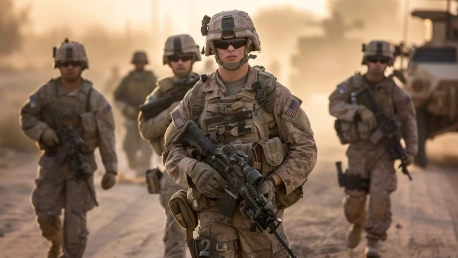The article explores the transformative potential of implementing command center models in large healthcare delivery systems, focusing primarily on enhancing efficiency through centralization, real-time data analysis, and the coordination of resources across departments and agencies. Drawing on case studies from private hospitals, it discusses how these models can be adapted for federal health facilities like the Veterans Health Administration (VHA) and the Military Health System (MHS).
Definition and Role of Command Centers
Command centers, often inspired by the operational efficiency of air traffic control and NASA mission control, serve as centralized hubs for monitoring capacity, inventory, and patient flow within healthcare systems. These centers are designed to improve patient safety, track critical metrics, and address complex problems through real-time data analytics. The ultimate goal is to streamline operations, reduce costs, and enhance patient care.
Proven Success in Private Hospitals
Private hospitals have demonstrated notable success with command center models. For instance, the Oregon Health & Science University (OHSU) transitioned from using a whiteboard system to manage patient admissions to an electronic command center, nearly doubling their referral numbers and enabling more efficient bed usage. Similarly, Tampa General Hospital’s command center led to a $40 million cost saving, a 25% reduction in emergency-room diversions, and significant bed occupancy growth. Another notable example is the Johns Hopkins Health System, which achieved substantial improvements in patient flow, bed assignment, and revenue by integrating various functions like transfer lines, lifeline support, and bed management into their command center.
Command Centers’ Broader Potential for Federal Health Facilities
Federal health systems such as the VHA and MHS are particularly well-suited for command centers due to their standardized missions, centralized governance, and integrated service networks. Command centers can help these extensive systems manage patient volumes and regional resources more effectively, thus enhancing emergency response capabilities and overall healthcare delivery. The potential benefits are especially relevant in times of crisis, where rapid and coordinated responses are crucial.
Case Studies of Regional Partnerships
The collaboration between OHSU and General Electric Healthcare for a statewide capacity-monitoring system during the COVID-19 pandemic highlights the practical benefits of command centers. This partnership successfully managed ICU stress levels throughout the state. Similarly, Tampa General Hospital played a pivotal role in managing hospital resources across West Florida, further demonstrating how command centers can effectively coordinate large networks.
Key Implementation Strategies
Implementing a command center requires strategic planning and stakeholder engagement. Institutions should start with basic functions and gradually expand based on early successes, aligning their efforts with a clearly defined mission focused on improving capacity, safety, and care quality. Tracking health equity metrics is also essential for addressing disparities and enhancing care for vulnerable populations. Success depends largely on the engagement and support of front-line staff, administrative leaders, and physicians, who should be involved in every step of developing and operationalizing the command center. Consistent data input and standard operating procedures are crucial for effective collaboration and resource optimization across networks.
Centralization for Efficiency
Command centers drive efficiency by centralizing decision-making processes, leading to better resource allocation and improved patient flow management. These advantages translate into reduced operational costs and enhanced patient outcomes. In private hospitals, this centralization has been shown to significantly improve efficiency and lower costs.
Leveraging Technology
The integration of real-time data analytics and automated systems is vital for the success of command centers. Private hospital examples underscore the significant improvements obtained through the use of advanced technology to monitor and manage patient care and resource utilization. These technological advancements are crucial for the efficient operation of command centers.
Resilience During Emergencies
Command centers provide a robust framework for managing public health emergencies. The article highlights multiple instances where command centers enabled hospitals to handle crises such as the COVID-19 pandemic and natural disasters effectively. These centers offer real-time data and centralized coordination, proving invaluable during emergencies.
Potential for Federal Systems
Federal health systems, with their integrated frameworks and standardized operations, stand to benefit enormously from command centers. These qualities facilitate seamless implementation and promise improvements in emergency response and resource management. The potential for better patient outcomes and a more resilient healthcare infrastructure is significant.
Main Findings
Command centers can significantly improve patient management, reducing wait times and optimizing bed occupancy. Hospitals implementing command centers experience notable financial savings and operational efficiencies. The model is scalable and adaptable, suitable for various healthcare systems from single hospitals to extensive federal networks. Command centers also enhance crisis management capabilities, making them indispensable for modern healthcare systems.
Conclusion
The article delves into the transformative power of command center models in large healthcare systems, emphasizing their role in optimizing efficiency by centralizing operations, enabling real-time data analysis, and improving resource coordination across various departments and agencies. By examining case studies from private hospitals, the piece highlights the adaptability of these models for federal health institutions such as the Veterans Health Administration (VHA) and the Military Health System (MHS). These command centers integrate diverse functions and data streams, leading to improved patient care, reduced wait times, and streamlined workflows. The potential for these models to address challenges in federal health facilities is significant, offering a cohesive framework for managing complex healthcare environments. Overall, implementing command centers could revolutionize the way healthcare is delivered in large, multi-faceted systems, ensuring more efficient and effective care delivery through advanced coordination and data-driven decision-making.









